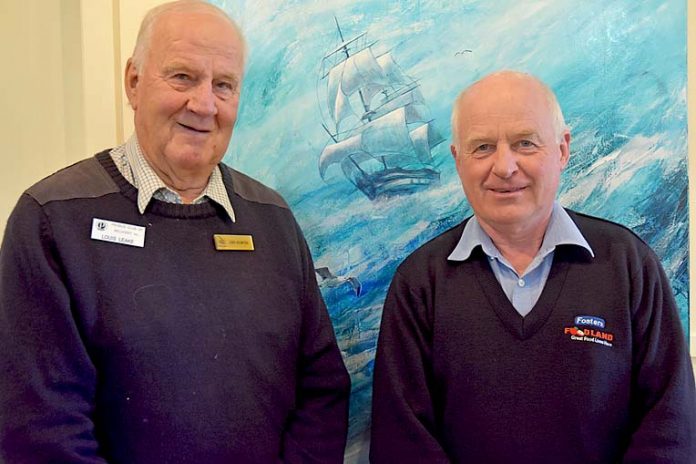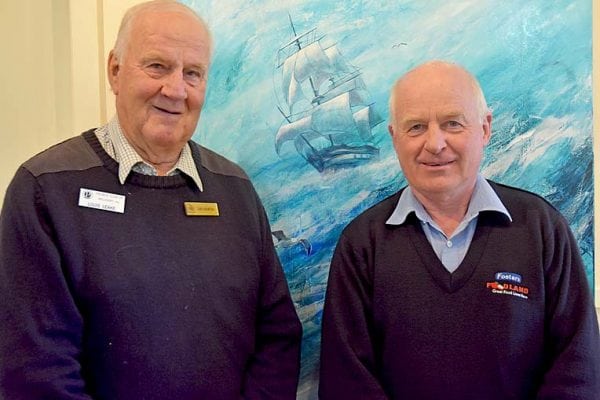

ON June 13, 1876, in a “storm to end all storms”, the Geltwood ship struck a rock off the coast of Beachport and sank to the ocean floor.
Almost 142 years later, Millicent diver Brian Foster shares the story of the iron-hulled barque that claimed 31 lives and became known as one of Australia’s worst maritime disasters.
“A storm struck the district, the likes of which we have probably never experienced before,” Brian said.
“I read from a report in the newspaper on the day that it was piercingly cold, with thick clouds rolling onto the horizon pushed by hurricane force winds.
“The storm struck at about 10pm and lasted two hours.
“Many people in Millicent were living in tents, which were blown away and one man was even carried away in his tent.
“Several homes had their roofing blown off and stone walls and fences were blown down.
“Windows of houses were blown in and haystacks simply disappeared – it was a storm to end all storms.”
Although uncertainty surrounds the exact date the Geltwood was wrecked, it is presumed it was during this storm.
The sailing ship, bound for Melbourne from Liverpool, England, never made it to its destination and was wrecked in the oil rig area of Canunda – only 750 metres offshore.
Brian said the Geltwood tragedy set off a chain of events, which found a unique place in the folklore of Millicent and surrounding districts.
“The ship, when it was discovered or wrecked, fired signal flares, which were seen from Rivoli Bay,” he said.
“People reported them, but nothing was done about it and there was nothing that could have been done about it.
“There were no lifeboats and no means to help the ship.”
Brian added the sailing ship was “well and truly off course and pretty unlucky” to have struck the reef.
“There are not many reefs in that area of coast,” he said.
“This one stretches a couple of hundred metres either side of the wreck and she was smack bang in the middle.
“Had she come to either side of it she may have come almost into the beach and some of the lives may have been saved.”
Authorities were not notified of the wreckage until July 5, three weeks after it had occurred.
Brian said the looting that unfolded during that time gave Millicent a place in history.
“When the police finally arrived to the scene they found a body had been washed ashore,” Brian said.
“The wreckage and cargo were littering the beach for miles.
“They found no survivors or any other bodies, but they soon found the chests that had washed ashore had been broken open and the contents removed, one of them being the captain’s chest.”
Tracks were discovered behind the foreshore dune, which showed people had known about the wreck for some time and looted it.
Large quantities of cargo from the Geltwood had been taken and buried in dunes to be recovered later.
Among the cargo were oil skins, fencing wire, cases of tobacco, chains, shovels, saws, leather, crockery, roofing slates, stout, beer and ale, barrels of rock and salt.
Brian made mention of two local farmers who were among those arrested for looting.
Their trials were held at the Somerset Hotel where they were sentenced to prison terms.
He also spoke about the four bodies that were later washed ashore, only one of which was identifiable – James Nelson.
Brian then fast forwarded to the 1980s when local fisherman Lance Chambers sighted the wreck from the water’s surface.
“He knew, as did everyone, there was a wreck in the vicinity and he had been looking out for it,” Brian said.
“Divers were unable to locate the wreck, this was before the days of GPS.
“It was abalone diver Mick Galpin who finally found the wreck while diving in the vicinity.
“He found it with great excitement, I remember when he rang to tell me.”
Following the discovery, a Geltwood divers group was set up to conserve and display artefacts from the Geltwood.
Two anchors were recovered and can now be found on display at the Millicent Museum and as a memorial in Southend.





